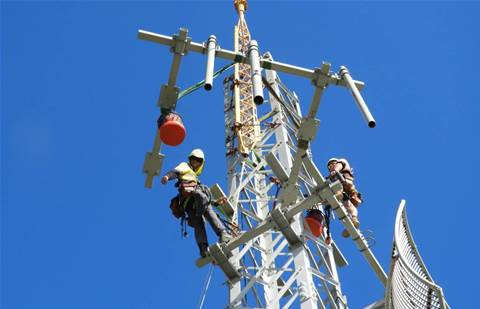Telstra’s enterprise business has just barely hung on to its status as one of the telco’s only two growing market segments.
Telstra Enterprise, which includes mobile services, data & IP, and its shining network applications and services (NAS) business, remained steady with $8.24 billion in revenue for the financial year to 30 June 2019, growing just one third of a percent.
The company announced in an ASX release that Telstra Enterprise now uses Salesforce as its single sales portal, leading to a 27 percent increase in sales pipeline in the past 12 months.
Despite growing international revenue by nine percent thanks to higher margin data & IP products, domestic revenue fell 2.1 percent as minor NAS and mobility growth was offset by wider industry ARPU (average revenue per user) declines and an 8.3 percent drop in revenue for data & IP.
NAS has typically been Telstra’s fastest growing product segment. That changed in FY19 with revenue falling 4.1 percent to $3.48 billion. The NAS business includes NBN commercial work, managed network services, unified communications, cloud services, industry solutions and integrated services for consumer, small business and enterprise customers.
The weaker NAS results were pinned on lower NBN commercial works and integrated services. Without the impact of NBN commercial works, revenue would have rose two percent, with 13.9 percent growth in small business alone.
Managed network services dropped four percent to $648 million, reflecting a decline in non-recurring revenue, offset by 31.9 percent growth in security sales.
Cloud services grew half a percent to $430 million, which included higher revenue from public cloud services, offset by lower professional services and on-premises equipment.
Unified communications was the big winner within NAS, growing revenue by 14 percent to reach just over $1 billion thanks to increased calling and collaboration annuity revenue.
Overall, NAS’s EBITDA margin declined by 0.6 percent to 10 percent, reflecting the changing revenue mix and NBN commercial work decline.
Telstra InfraCo
FY19 marked the first full year since Telstra spun out its infrastructure assets into a new business called Telstra InfraCo, which managed approximately $11 billion in assets including Telstra’s data centres and exchanges, fibre networks, copper and HFC networks, subsea cables, poles, ducts and pipes.
Telstra started recognising internal access charges in FY19, the fees Telstra essentially pays itself for accessing its own infrastructure. With these charges included, InfraCo’s revenue rose 51.6 percent to $4.95 billion. Without those charges, revenue would have decreased 6.3 percent to just over $3 billion.
The company also revealed this morning that it had just sold three of its international data centres in Europe and Asia to private equity firm I-Squared, with proceeds expected to reach $160 million. The data centres were used predominantly to provide services to Telstra’s international enterprise customers.
To put the size of Telstra’s market segments into perspective, the largest segment, consumer and small business, pulled in $14.27 billion in revenue, Enterprise reported $8.23 billion, InfraCo reported $4.95 billion, ‘other segments’ (includes things like Global Business Services and Telstra Health) reported $2.16 billion, and networks and IT reported $70 million. Enterprise and InfraCo were the only two segments that saw positive revenue growth.




_(21).jpg&h=142&w=230&c=1&s=1)








.jpg&w=100&c=1&s=0)










